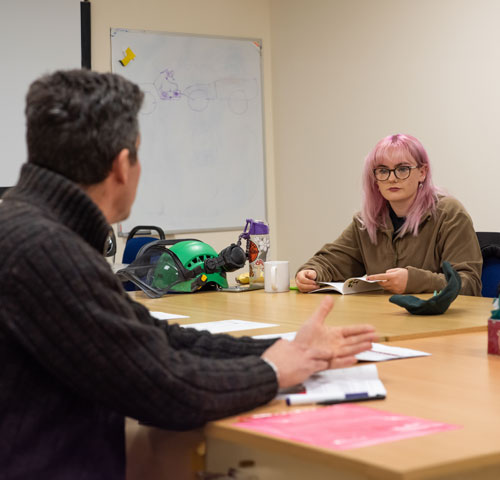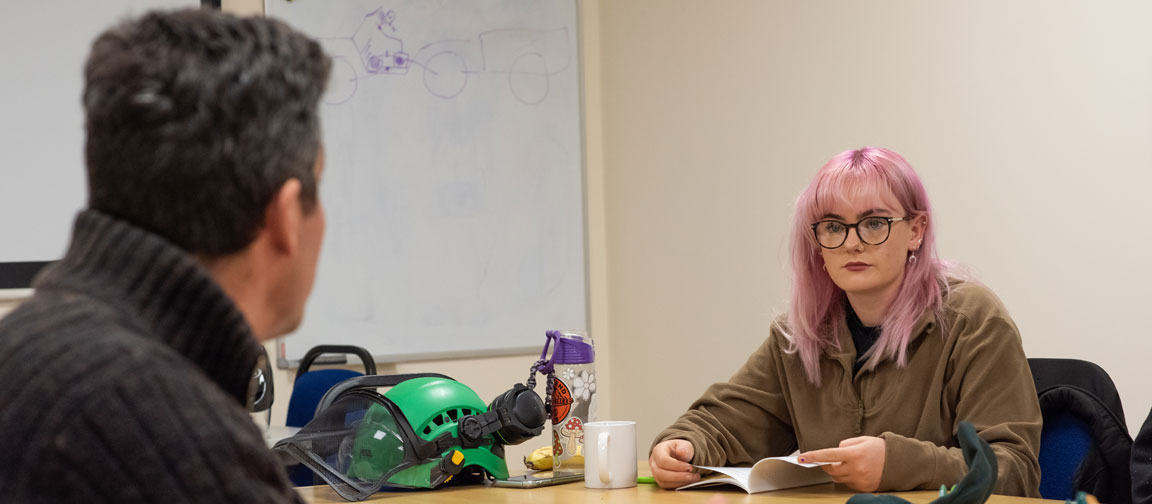Best practice in hiring staff
19 March: Site maintenance at 16:00 GMT today - if you are logged in at this time you will be logged out briefly.

Best practice in hiring staff
Best practice in hiring staff

The difficulties farmers are having in finding reliable, dedicated staff are, by now, pretty well documented.
In June 2023, government published its independent review into Labour Shortages in the Food Supply Chain.
The report acknowledged TIAH's role in addressing issues. We responded, showing our commitment to helping tackle the problem.
Of course, tackling the widespread staffing issues is far from simple. While last year's labour shortages may not have been as severe as they were in 2022, but there was still plenty of controversy as some ministers claimed pickers weren’t even needed in the UK.
Even Minette Batters’ final address to NFU Conference saw her say more work was needed to improve access to seasonal and permanent labour.
Given all the difficulties with hiring staff, it’s never been more important to ensure your recruitment process is the best it can be. Doing this will allow you to find, identify and hire the best people and, perhaps even more importantly, keep them with you for longer, too.
Access tools to help you hire
This guide offers a quick overview of the whole process and some important considerations you should make when hiring. As such, it can be a great place to start.
But TIAH members can get a lot more detail, with advice on each step and full access to our templates and downloadable tools. Members can also watch our webinar on Hiring for the long-term, hosted by Alistair Gibb, Senior Consultant at management, training and development specialists Cedar Associates.
Critical to plan before advertising your job
When setting out to hire someone it can be tempting to simply advertise for the exact role of whoever left the business.
But this can fail to recognise the skill that came with experience of the person who left. It can also demoralise existing staff who might have ambitions to develop their role. Spend some time identifying the skills and knowledge you actually need from a new employee and what areas of the role might be covered by existing staff.
What are the most important skills you need to bring into the business? What kind of personality are you looking for them to fit in with your team?
With these two factors identified, you should create a job profile. TIAH has a range of job profiles covering most on-farm roles and you can easily adapt them to create your own.
By focusing on the skills, knowledge and personality you’re looking for, you can create a fair benchmark to assess each applicant later.
Reaching out to the right people
Once you’ve identified the skills you need you can start to thinking about how you can find them.
Do you have any current employees which are ready to step into a new role? If so, a quick conversation with them might help lay out the groundwork on whether that could work.
And if not, then it’s time to stretch further afield. Farming and growing is becoming increasingly professional, so higher-skilled jobs may do well on LinkedIn. But if you’re searching for entry-level jobs, then you could be better off with recruitment agencies and jobs boards.
Members of TIAH can get more advice on approaching team members on how to step up to new challenges, how to coach them in their development and how to target the right people when recruiting externally in our Recruitment Toolkit.
Five top tips for writing effective job adverts
There’s a lot of competition when advertising a job, so it’s important to make sure your advert stands out. With this in mind, there are some key steps you can take to attract the right people to your job.
- Write the advert in plain English
Keeping the language simple makes the advert more accessible and this will naturally attract more people. Our job profiles can help with this too. - Use an accurate job title and clearly list the duties responsibilities
It may sound obvious, but having an accurate title is the first step in attracting the right person. Many jobs have different names, so compare your role with our job profiles to make sure it’s in line with industry standards. - Clearly list the duties and responsibilities
Again, having a clear explanation of the details of the job will ensure it appeals to the right people. List the essential skills you’re looking for. Consider any transferable skills you feel people from outside the industry could bring to the role, too. - Give some insight into salary and benefits
While it’s not necessary to detail the exact pay, doing this can the advert appeal to the right people. We’ve looked at a range of sources to give approximate industry-standard salaries against our job profiles. - State the job location and working hours
This information is important for new starters to know because they may need to work non-social hours too. New legislation allows workers to apply for flexible working arrangements earlier in their roles and more often each year. Being open about the hours the job requires will make it easier to justify your case when rebutting an application for flexible working hours.
TIAH members can benefit from more tips on creating an effective job advert, as well as our templates for job profiles and adverts. These can help you save time when recruiting staff, while also allowing you to follow best practices.
How to shortlist applications quickly and accurately
This is the phase where all your planning and preparation reaps rewards! By spending the time to define the essential skills and personality traits you need in any new staff member, you can now assess applicants against them.
Your job description serves as a ready-made set of key requirements, so allocate some time to review each CV and cover letter to determine if fulfil this criteria.
Before the interview, consider what criteria you want to evaluate instead of focusing on it during the application process. The important thing to remember is to assess each applicant against these essential criteria – and not against each other.
This approach enables you to swiftly eliminate candidates who haven't shown the required abilities, thereby letting you concentrate on the interview process.
Preparing for interviews
The job interview is often the first opportunity you have to weigh up how well each applicant could fit in with the team. But it can also be a stressful experience for everyone involved. Thankfully, there are some easy steps to getting around this.
- Hold the interview in a comfortable place
Ensure the interview takes place in a location with no distractions and preferably in a quiet setting. Similarly, if you’re holding the interview over the phone, make sure you’re somewhere that you can relax and concentrate on the call. - Plan the questions ahead of time
Build a structure to the interview. Start with some welcoming questions to put them at ease, before asking about the specifics of each of your essential criteria. This will help put the interviewee at ease before you tackle the trickier, technical questions. - Ensure you tackle questions specific to each applicant
Use your planned structure for each applicant, but leave yourself some time to ask questions on any specific issues you have with each applicant. If they have any unexplained gaps in employment, then now is your chance to find out why they’re there. - Have a colleague join you for the interview
Get someone who will work directly with the new employee to attend the interview, too – even if they only take notes, as a second opinion can often help identify strengths and weaknesses. - Set aside some time after the interview
Give yourself some time after the interview to reflect on the applicant’s performance so you can summarise your thoughts on them. It can help to score each applicant against the essential criteria immediately after each interview. Doing this will allow you to quickly compare all the applicants once all the interviews have been completed and scored.
We’ve created a host of downloadable tools and resources to help members tackle interviews.
From a recommended structure for job interviews, including the approximate time you should spend on each section, to shortlisting templates and example questions, our Recruitment Toolkit has a host of resources which can help you to quickly prepare for an effective interview process.
Making the decision
Once you've completed the interviews and you’ve compared your notes on each candidate, ideally by assessing their abilities against the essential criteria in your job profile, it’s time to make a decision.
There are two vital considerations here. Firstly, do not settle for the best of a bad bunch. If none of your applicants fulfil - or come close to fulfilling the essential criteria, then it's often best to source more applications. Have another look at where you’ve advertised the role and see if any other websites may be of use.
Secondly, if you’re struggling to make the final decision, see if you can have a second interview with your preferred candidates. Use this to delve into the particulars of the position, gain a clearer understanding of their skills, and determine if each applicant brings any additional valuable experience.
With this all done, you’re now in a position to call your preferred candidate and offer them the job. If they accept, send them the necessary paperwork promptly because they may have other interviews scheduled.
Similarly, once they’ve accepted the offer on the phone, you’re then in a good position to let the other candidates know they’ve been unsuccessful. You can let most candidates know by email, but it can be worthwhile to let the best candidates know on a phone call.
Phoning them allows you to personally thank them, say how difficult a decision it was and ask them if they’d like to be contacted should another vacancy arise. This can be important because if your preferred candidate changes their mind before returning their contract, then you might be able to simply phone the other person, explain the situation and offer them the job!
The next steps
The hiring process doesn't finish once an offer is accepted. Having completed all the work to attract, identify and appoint the right person, it's important to help them get the best start and make them feel part of the team.
Having a thorough induction is essential, giving you the time to outline the key health and safety issues which are relevant to your unique farm business.
And while there’s also a lot of paperwork to go through, it’s important not to overload the new employee, too.
Creating an induction plan allows you to ensure you tackle all the important paperwork and basic training needs. It can also help you pace the delivery of all this information too.
TIAH members can access our induction template, which details all the essential paperwork, training and policy tasks needed to successfully bring a new employee into your team.